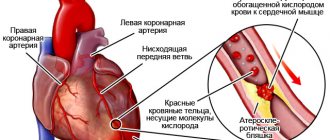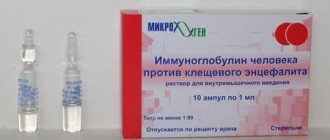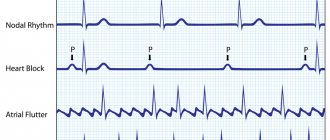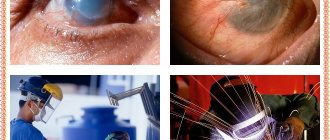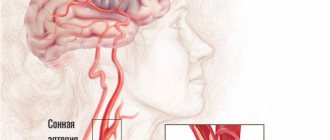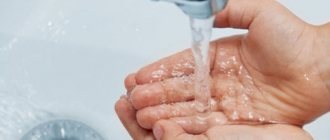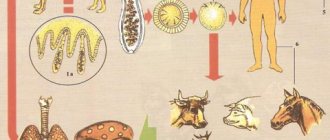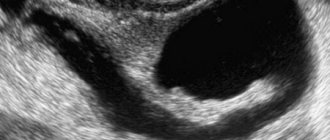Category: Chemical poisoning
Chlorine poisoning occurs when the concentration of the substance in the air exceeds 0.1 mg/m3.
Chlorine is a poisonous gas with a pungent yellow-green odor. The active nonmetal is heavier than air and, when leaked, spreads across the floor or ground. It easily combines with any elements of the periodic table, therefore it is part of minerals.
It dissolves well in hydrocarbons, which is why it is widespread in production and everyday life. The element is toxic and causes irritation and burns to the lungs.
When working with a chemical, it is important to take safety precautions.
How dangerous are chlorine vapors?
Chlorine is a yellow-green gas with a pungent, limey odor and a sweet, metallic taste that is widely used in industry. People use it in various fields and in everyday life, as part of medical drugs, solvents, pesticides, bleaching and detergents.
Chlorine compounds in large quantities are dangerous; they have a toxic effect on the throat, nose and mouth, after which they quickly sink lower and damage the lungs. How severely a person is poisoned, how dangerous the fumes are, depends on the amount of the substance and the duration of the poison’s effect on the body.
Prevention
Any poisoning can be avoided - to do this, it is enough to follow safety precautions and follow the instructions that are usually indicated on the packaging. Simple steps will help you avoid the consequences:
- Any work with Belizna must be carried out in a well-ventilated area to prevent harmful fumes from accumulating.
- Substances must be stored out of the reach of children. Even if your child is already 5 years old and he perfectly understands the purpose of the chemical, allowing him to use it is strictly prohibited.
- Use protective equipment that protects the skin and mucous membranes from contact with toxic substances - this way you can avoid burns, the treatment of which is a rather complicated process.
- Wash your hands and skin promptly when working with Belizna.
Note! Due to its accessibility, “Whiteness” has become a tool for the actions of criminals who want to harm the health and even life of the enemy. When using this substance, remember that any intentional poisoning of someone is punishable by a fine, and in case of serious consequences for life and health, it can result in a severe sentence.
It is obvious that it is almost impossible to do without “Whiteness” in everyday life. It gets rid of unwanted stains and pathogenic bacteria, and at the same time creates a high risk. When using this substance and any of its analogues, it is necessary to follow all safety rules, isolate children and pets, and then household chores will definitely not turn into a tragedy.
First aid for poisoning
When the first signs of intoxication appear, calling an emergency carriage is mandatory. Before the arrival of doctors, provision of first aid is necessary. In case of chlorine vapor poisoning, you need to:
- Remove the source of chlorine and remove the person from the contaminated area to fresh air. If the gas has actively spread in the room, before taking measures to save the victim, the person must put on a gauze bandage.
- Remove the patient's clothing and wash the skin that came into contact with the substance with warm water.
- Rinse the stomach: drink plenty of warm water, induce vomiting.
- Rinse your mouth, nose, and throat with water and baking soda. If chlorine gets into your eyes, rinse them with plenty of water and add soda to the water to relieve the sting.
Prompt first aid for dangerous chlorine poisoning is an important criterion for a quick recovery, minimizing complications in the future and even saving a person’s life.
Video: what happens if you drink bleach
Article rating:
( 1 ratings, average: 5.00 out of 5)
Share with friends:
You may also be interested in:
Propane gas poisoning in adults and children♻ - signs and symptoms, first aid
Zinc vapor poisoning - symptoms, first aid and treatment
What is dangerous about nitrogen, nitrogen poisoning - symptoms and signs
Diesel vapor poisoning - what to do, first aid and treatment
Antidote for chlorine poisoning
First medical aid:
- Rinse the nose and throat with a 2% sodium bicarbonate solution, water or saline solution.
- Eyes: 1-2 drops of a solution of novocaine 1%, dicaine 0.5% with adrenaline or a 30% solution of sodium albucid.
- Throat: inhalation of 2% sodium bicarbonate solution.
- Subcutaneous injection of morphine 1 ml of 1% solution, ephedrine 1 ml of 5% solution or atropine 1 ml of 0.1%.
- Intravenous injection of calcium chloride 15 ml of 10% solution, aminophylline 10 ml of 2.4% solution.
- Treatment of symptoms. In case of intoxication, complex treatment is always prescribed. In the hospital, doctors restore airway patency, relieve pulmonary edema, stabilize hemodynamics, correct acidosis, prevent and treat complications, that is, get rid of the consequences of intoxication. There is no effective antidote as such.
Treatment methods are as follows:
1. Surgical intervention.
2. Drug treatment:
- Antibiotics;
- anti-inflammatory medications;
- hormonal drugs;
- antispasmodics;
- mucolytic drugs;
- corticosteroids;
3. Vitamin complexes.
4. Physiotherapy methods:
- oxygen therapy (oxygen);
- inhalation procedures based on bronchodilators.
During pregnancy, allergic reactions, and ulcers, treatment options are narrowed.
In cases of mild poisoning, the patient can cope with intoxication at home, using traditional antidote recipes. You can drink milk by mixing it with the white of a raw chicken egg. Mixtures of honey with onion juice, olive oil with chicken egg white are useful for the throat. Freshly brewed tea is dropped into the eyes and moistened.
For medicinal purposes in case of damage to the upper respiratory tract, herbs are used that are sold in pharmacies: licorice decoction, coltsfoot, marshmallow, elecampane.
When is medical attention required?
If there is a suspicion of chlorine poisoning, it is necessary to seek qualified help in 100% of cases.
Since it is not always possible to assess the degree of poisoning by clinical manifestations in the first hours, the victim should be under round-the-clock medical supervision for the first 24 hours. This is necessary to promptly prevent the development of life-threatening complications.
Treatment of chlorine poisoning is carried out in a hospital setting. The victim is provided with oxygen supply, hemodynamics are stabilized, vital functions are supported - breathing, cardiac activity, metabolic processes. Prevention of complications and symptomatic therapy are carried out.
Consequences
A victim of chlorine vapor is treated for a fairly long period, adhering to the algorithm for taking medications and related procedures. The peculiarity of the appearance of complications after intoxication is that ailments may not arise immediately, but after months or years.
Deterioration in health is manifested in frequent diseases of the trachea, bronchi, lungs, as well as the appearance of seizures, dermatitis, and heart failure. Respiratory tract disease and cardiac dysfunction can bother a person for the rest of his life.
The article was approved by the editors
Routes of entry into the body
Sodium hypochloride poisoning occurs through inhalation of vapors or accidental ingestion. In case of contact with the mucous membranes of the eyes, mouth or nose, irritation occurs. The manifestation of symptoms of poisoning depends on the initial state of the body and the presence of allergic reactions to bleach.
Treatment
If chlorine poisoning occurs, you cannot hope that the situation will improve on its own after a few days. In some cases, a person’s life depends on timely access to a doctor.
Specialized treatment is carried out in a medical facility and consists of the following:
- gastric lavage using a tube;
- infusion maintenance therapy;
- stimulation of the heart;
- restoration of respiratory function;
- identification and elimination of damage to the organs of vision;
- amputation of the stomach or esophagus in case of severe organ damage.
Important: if treatment is provided as soon as possible, the risk of developing complications in the future is significantly reduced.
The most common consequences of sodium hypochlorite poisoning are various respiratory diseases, blurred vision and irreversible dysfunction of the gastrointestinal tract.
The effects of chlorine on the body
Constant exposure to even small doses of chlorine (the physical state can be any) on the human body threatens people with the following:
- Pharyngitis.
- Laryngitis.
- Bronchitis (acute or chronic form).
- Various skin diseases.
- Sinusitis.
- Pneumosclerosis.
- Tracheitis.
- Deterioration of vision.
If you have noticed one of the ailments listed above, provided that you have been constantly or once (cases of visiting a swimming pool also include) exposed to chlorine vapor, then this is a reason to contact a specialist as soon as possible! The doctor will prescribe a comprehensive diagnosis to study the nature of the disease. After studying its results, he will then prescribe treatment.
Getting inside
Poisoning by white vapors is possible when laundry is boiled for a long time, and less often when cleaning indoors. High concentrations of chlorine in the air irritate the mucous membranes of the upper respiratory tract, eyes and nose. There will be no severe poisoning from inhalation of sodium hypochloride at home.
Symptoms of irritation of the larynx, trachea and bronchi are sore throat, sneezing, hoarseness, coughing, sometimes so strong that transient oxygen starvation of the brain develops. Headaches and dizziness occur. With hypersensitivity to chlorine, spasm and allergic swelling of the larynx is possible, which can lead to death. White vapors, irritating the mucous membrane of the eyes, can cause redness of the sclera and conjunctivitis.
First aid to the victim is to remove him from the zone of influence of sodium hypochlorite and ventilate the room. It is necessary to remove the remaining irritant from the mucous membranes: rinse the eyes with running water, gargle. In case of severe poisoning, soda inhalations are indicated. The simplest method is to breathe soda vapor over a hot alkaline solution. In the most severe cases, you should immediately consult a doctor.
When Whiteness gets into the gastrointestinal tract, symptoms of burns to the mucous membranes and signs of poisoning with caustic substances develop. The pain syndrome begins in the oral cavity. When liquid chlorine enters the esophagus and passes through the natural narrowings of the esophagus, a spasm develops. The victim notes increased pain, first in the throat, then behind the sternum and then in the epigastrium.
Irritation of the gastric mucosa leads to a reflex contraction of smooth muscles and the appearance of the urge to vomit. As a result of the destructive effect of Whiteness on stomach tissue, an admixture of blood is found in the vomit. Vomiting does not eliminate the necrotic changes that have occurred and does not bring relief. In case of accidental use of undiluted solution, serious gastric bleeding may occur.
20-30 minutes after Whiteness enters the gastrointestinal tract, chlorine is absorbed into the blood and causes general symptoms of poisoning: nausea, nervous and motor agitation, headache. Reaching the excretory system, it affects the kidneys, leading to renal failure. Toxins are not removed from the body and accumulate in the blood. A “vicious circle” arises: the concentration of toxins increases while it is impossible to eliminate them, which is facilitated by damage to the kidney tissue. Signs of intoxication include an increase in body temperature.
Calling an ambulance is mandatory. As an emergency before the doctor arrives, rinse the mouth, lavage the stomach, followed by inducing vomiting. Raw egg whites are added to the rinse, which denatures to absorb toxins.
If sodium hypochloride enters the body through the respiratory tract or digestive tract, it is recommended to consume milk; this product is a natural detoxifying agent.
Dry mushrooms
However, despite the benefits, mushrooms also pose a considerable danger to the body. They are difficult for the stomach to digest and their nutritional value is extremely low. At the same time, experienced lovers of “silent hunting” know that the caps contain less fiber, and therefore are easier to digest than the legs.
Nutritionists believe that the body best absorbs dry mushrooms in the form of ground flour.
For example, if you can’t imagine your diet without mushrooms, then you can’t think of a better way to consume them, like adding them to the dough for baking pancakes. Store the powder in a closed glass jar with the lid tightly closed. For long-term preservation, it is recommended to add a small amount of non-iodized salt to the flour, since iodized salt kills the taste and aroma of the product.
Despite the fact that drying is considered the safest method of harvesting, some nuances should be taken into account in order to avoid unpleasant consequences - poisoning and eating disorders.
Firstly, dry mushrooms contain fungin, a substance that puts additional stress on the liver. For this reason, doctors do not recommend using the product more than twice a week, and young children should not be given it at all, at least not earlier than 7 years of age.
Dry mushroom poisoning
The question of whether it is possible to be poisoned by dried mushrooms worries many. In fact, you can be poisoned by pickled, salted, boiled, fried, and even dried mushrooms. The method of preparing them does not matter. Experienced mushroom pickers know that mushrooms can undergo mutation over time, so even a person who understands them will not be able to distinguish a real mushroom from a false one. So what difference does it make how they were prepared? Poisonous ones will remain poisonous even after drying.
The only protection against poisoning is knowledge of the mycological characteristics of individual species and the differences between them.
The place of collection is of no small importance. If it occurred in ecologically clean areas, then the risk of poisoning from the product is much lower than that collected along roads and highways. When buying mushrooms at the market, you need to ask where they were collected.
The third reason why you can be poisoned by dry mushrooms is if a person has contraindications. It is not recommended to use this product for persons suffering from diseases of the gastrointestinal tract, kidney and liver diseases.
And, finally, the quality of the raw materials used for drying. Mushrooms must be carefully processed. It is impossible to dry old, softened, overripe, or with signs of rotting.
Local action
In direct contact with the mucous membranes of the eyes, Belizna has a pronounced irritating effect. Severe pain and lacrimation occurs, the eyes cannot be opened. If first aid is not provided in a timely manner, contact conjunctivitis develops as a result of a chemical burn.
Rinsing with running water when forcibly opening the eyelids does not always bring relief. In severe cases, lidocaine instillation is required, or an injectable drug may be used. After 10-15 minutes, it is necessary to treat the mucous membrane of the eyes with a solution of sodium sulfacyl. Newly discovered Albucid is used. The use of an already standing, open product is undesirable due to its rapid evaporation and salt precipitation. Then you need to seek specialized medical help to avoid vision loss.
If concentrated solutions of Whiteness come into contact with the skin, contact dermatitis may develop, especially when it comes to the delicate skin of a child. You must first wash the affected areas with running water, then with a weak soda solution.
What mushrooms can cause poisoning?
Many people love mushrooms. But sometimes this love has very dangerous consequences in the form of severe poisoning. People mistakenly believe that poisoning can only be caused by poisonous mushrooms. But in fact, edible fruits can also pose a danger. The fact is that the legs and caps create an environment favorable for the life and proliferation of bacteria. Heat treatment kills pathogenic microorganisms. But if prepared incorrectly - if the pickles are stored for too long, or are soaked in an insufficiently salted marinade, for example - poisoning from pickled mushrooms is possible.
Is it possible to get poisoned by porcini mushrooms? Yes, such cases also occur, although these fruits are considered the most harmless. The fact is that mushrooms - even edible ones - absorb toxins like a sponge. Therefore, they can become poisonous if stored inappropriately. This applies to raw, dried, and pickled mushrooms. Therefore, before cooking, it is better to study all the basic rules of processing and storage as carefully as possible.
How to distinguish poisonous mushrooms from edible ones?
The easiest way to protect yourself and prevent mushroom poisoning is to know which fruits are poisonous and which are not. There are a lot of nuances and it’s impossible to remember everything at once. But after a few trainings, you will be able to identify “good” and “bad” at a glance.
Here's how to distinguish poisonous mushrooms from edible ones and vice versa:
- Most edible mushrooms are tubular.
- Potentially dangerous fruits have an unpleasant greenish color. You should also be wary at the sight of a pinkish cap. These are mainly found in false mushrooms. To check, break it apart. If the mushroom is truly false, the scrap will turn red. You should not trust too bright colors. In most cases, noticeable caps are a red flag.
- You can’t rely on smell alone, but experienced mushroom pickers say that poisonous prey either smells unpleasant or doesn’t smell at all.
- If you want to prevent porcini mushroom poisoning, put them all in a pan with water and throw the onion into it. If the latter turns blue, bad news: the crop will have to be thrown away.
- Inexperienced mushroom pickers avoid wormy fruits. But in fact, insects and animals almost always only covet edible mushrooms. There are exceptions, but they are rare.
Types of poisonous mushrooms
Knowing the main types of danger will also help prevent mushroom poisoning. There are a lot of them - it is believed that out of more than 3,000 species of mushrooms, only about 400 are edible - but you don’t need to remember everything. It is important to know only those that are mainly found in local latitudes. Among them are the following examples:
- Pale toadstool is the most poisonous mushroom. Even a small piece of it is enough to cause irreparable harm to health. The poison affects the liver and kidneys, and the worst thing is that signs of intoxication appear too late. A distinctive feature of the toadstool is an egg-shaped thickening at the base of the stalk.
- Fly agarics. And not just red ones with white dots. In total there are about 600 species of different fly agarics. And several of them are even quite edible. And yet it’s not worth the risk - it’s much safer to bypass the fly agaric on the tenth road and, at best, just take a photograph of it.
- Poisoning with satanic mushrooms occurs even after prolonged cooking. Therefore, you should not trust their attractive appearance - the fruit caps reach 30 cm, and the stem can be up to 10 cm wide - it is too deceptive.
- Fiberworts grow in both coniferous and deciduous forests. And they have a distinctive characteristic - a sharp, unpleasant odor. The caps of the fibers are cone-shaped and reach 5 cm in diameter. The pulp is white and does not change color when scrapped.
- Poisoning with pig mushrooms is not so acute, but is still dangerous - as a result of intoxication, the number of red cells in the blood decreases. The pig looks like a large olive hat on a short stem.
- Gall mushrooms are often confused with boletus mushrooms. But unlike the latter, they have pinkish pores, and there is a dark mesh on the leg.
What is Whiteness and what is it used for?
Whiteness is a traditional disinfectant, bleaching, and cleaning agent, the main component of which is sodium hypochloride. Most often it is produced either in a liquid or gel state.
The composition contains a large amount of active chlorine, so be sure to use it only in accordance with the instructions.
This product is used for:
- surface disinfection;
- bleaching laundry;
- removing stains from clothes and furniture;
- cleaning cat litter;
- cleaning the bathroom and any plumbing fixtures.
Chronic
There are types of work where bleach is constantly used. Even using protective equipment, a person inhales chlorine vapors. With prolonged exposure to the respiratory organs, they poison the body. Exacerbations of the chronic process are observed in the spring, with respiratory diseases, and with changes in weather. Inflammation of the lungs occurs without the influence of microbes, the person constantly coughs.
The painful state of bleach poisoning has a negative effect on the nervous system, a person quickly gets tired and irritated. Muscle cramps in the lower extremities often occur.
You should not use bleach during pregnancy. Chlorine enters the human body through the mucous membranes of the trachea and esophagus, as well as through the skin.
When chlorine gets on the skin, it causes inflammation and itching.
Chlorine in the pool
Pool chlorine poisoning usually does not occur suddenly unless the victim comes into contact with chlorine in concentrated form or because an excessive dose of disinfectant enters the pool due to human error or technical failure. Symptoms of chlorine poisoning in a swimming pool include skin irritation, conjunctival congestion, nausea, vomiting, hoarseness or cough. The possibility of chlorine poisoning in a swimming pool environment is reduced because most modern centers treat and disinfect the water with ozone and ultraviolet light. The situation at waterworks looks similar - fewer and fewer public utilities with chlorinated water are being built.
Treatment of bleach poisoning
Treatment of victims is carried out in a medical institution, only a mild degree of poisoning allows you to leave the patient at home and carry out therapeutic measures as part of a visit to the outpatient department.
In each individual case of white poisoning, an individual treatment method is selected:
When inhaling white vapor, the victim can undergo therapy aimed at restoring and improving respiratory activity; the patient is given drugs that normalize and stabilize the functioning of the heart.
Whitewash poisoning is a serious “incident” that requires professional medical attention. You should not trust folk remedies and the fact that “everything will go away on its own” - even harmless inhalation of white vapors can lead to the development of pneumonia, emphysema, and getting the disinfectant in question into the eye can lead to partial or complete blindness.
Tsygankova Yana Aleksandrovna, medical observer, therapist of the highest qualification category
51, total, today
Household chemicals today are the cause of many intoxications. Both children and adults often seek medical help when intoxication symptoms develop. And, as a rule, during diagnosis it is revealed that the nature of such a clinical picture is household chemicals.
Poisoning from cleaning or laundry chemicals most often affects children. This is due to their curiosity and restlessness.
Whiteness is a bleaching product with the highest level of chlorine, which, in turn, is a dangerous chemical that can cause very sad consequences if it enters the body.
Chlorine-containing preparation
The composition of the drug includes sodium hypochlorite, which ensures cleansing of greasy stains. Its formula is NaOCl.
Popular articlesPoisoning from household chemicals
Vinegar poisoning Hydrocyanic acid poisoning Phenol poisoning: symptoms and treatment
Substances of this type are strong oxidizing agents containing active chlorine in a concentration of 95.2%.
In order to increase activity, specific surfactants are added to the composition of the drug, ensuring easy wetting of various tissues.
Purpose
The composition of the drug provides safer and cleaner whitening than its analogues.
Whiteness is used for:
- removing stains from white cotton and linen products and bleaching them;
Used for cleaning and disinfecting tiles - cleaning dishes coated with enamel and porcelain;
- cleaning and disinfecting tiles;
- cleaning and disinfection of garbage containers and plumbing fixtures;
- washing and/or disinfecting aquariums and various equipment;
- water disinfection;
- oxidation of certain processes in industrial production.
In addition, whiteness, as one of the antibacterial and sterilizing agents, is used in agriculture, medical practice and the food industry.
"Pros and cons"
Not only the effectiveness of its use as a determining factor in achieving the expected result, but also how hazardous it is to health depends on the correct choice of a product. Before using whiteness, you must study the instructions and understand its pros and cons.
Advantages
The popularity of whiteness has not wavered, despite the variety of household chemicals offered on the market. This ensures its composition and advantages:
Whiteness is affordable
- efficiency at low temperatures;
- no boiling requirement;
- affordability;
- easy to use thanks to the release form;
- versatility.
Moreover, it effectively kills harmful microorganisms when treating fabrics and various surfaces.
Flaws
Basically, the disadvantages of the product are associated with its use for bleaching (the advisability of working with white fabrics, possible harm to fabrics, etc.).
As for the effect on the body, one can note its sharp and pungent odor. This deficiency sometimes becomes the cause of whiteness vapor poisoning.
What are the benefits of mushrooms
Fresh mushrooms contain a huge amount of vitamins and microelements; they contain a high content of sugars, essential oils and enzymes valuable for the body.
Nutritionists say that they contain much more protein than other protein-containing products, for example, chicken or fish. They contain a lot of fiber, fatty acids, and amino acids. Their beneficial properties are invaluable, so they are often used in the treatment and prevention of many serious diseases. In particular, they help prevent atherosclerosis. There are more vitamins in mushrooms than in grains. Their content of vitamins A, D, PP, and polysaccharides is especially high. Experts say that the most reliable prevention of cancer is the consumption of dried porcini mushrooms, and dried boletus helps to avoid gout.
Forest species are enriched with extract components; it is from them that the most delicious dishes, aromatic, rich broths, gravies, and sauces are obtained. They are an excellent addition to meat, fish, vegetable dishes, and seafood salads.
Symptoms of mushroom poisoning
This is a very dangerous product that can cause damage even after heat or any other treatment. Therefore, if suddenly signs of mushroom poisoning appeared shortly after consuming this product, you urgently need to pay attention to them. It is better to let your fears not be confirmed than to have to face the unpleasant consequences of intoxication.
Mushroom poisoning, how long does it take for symptoms to appear?
As a rule, the first signs of mushroom poisoning begin to appear 1.5 – 2 hours after eating them. But sometimes the reaction occurs within a day or even two. The time it takes for mushroom poisoning to manifest depends on various factors. The speed of the reaction is affected by the number of fruits eaten and their type, weight, age and health status of the victim. Even the strongest immune system cannot cope with the effects of toxins on its own. Therefore, sooner or later, signs of intoxication will appear.
The first signs of mushroom poisoning
It is almost impossible not to pay attention to them. Here's how mushroom poisoning manifests itself:
- nausea;
- severe vomiting;
- diarrhea up to 15 times per day;
- stomach ache;
- temperature rise to 38-39 degrees;
- the upper and lower extremities become cold;
- inflammation of the stomach and intestines;
- weakening of the pulse;
- the appearance of delusions and hallucinations;
- noticeable mental disorder;
- anuria;
- increased sweating and salivation;
- breathing problems;
- drowsiness and weakness;
- jaundice.
Poisoning with pickled mushrooms and botulism manifest themselves similarly, but with minor nuances. Main symptoms:
- nausea with vomiting;
- diarrhea;
- severe headaches;
- blurred vision (the eyes begin to double, everything floats);
- the oral mucosa dries out;
- convulsions appear;
- breathing becomes difficult.
Rescue algorithm
It is worth pointing out that the results of research from advanced laboratories prove that this product in optimal working concentrations does not entail serious consequences for the health and body of the consumer. In other cases, white poisoning requires assistance.
First aid
If white is swallowed, you can drink a glass of milk
What to do in such cases? First aid for steam toxemia involves removing the patient from the affected area. Why are they taking him outside and freeing him from restrictive clothing? First aid also consists of artificial respiration through a wet cloth.
If the product gets on the mucous membrane, first aid consists of the need to rinse the eyes generously with clean water and drip albucid. Then take the patient to the clinic.
If liquid is swallowed, first aid does not include any standard measures (flushing the gastrointestinal tract, inducing vomiting, etc.). You can drink a glass of milk to neutralize the alkali.
The patient needs peace and warmth, and the help of a specialist.
Chlorine - what is this substance?
Chlorine is a gaseous element with a yellowish color. It has a sharp, specific smell - bleach (bleach). In gaseous form, as well as in chemical forms, which imply its active state, it is dangerous and toxic to humans.
Chlorine is 2.5 times heavier than air, so if there is a leak, it will spread along ravines, the spaces of the first floors, and along the floor of the room. If it is inhaled, the victim may develop one of the forms of poisoning. We'll talk about this further.
